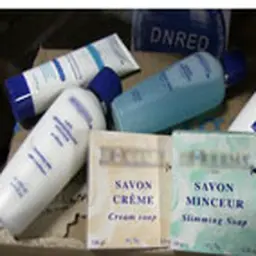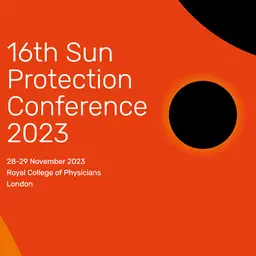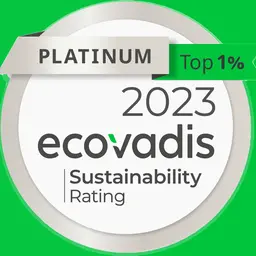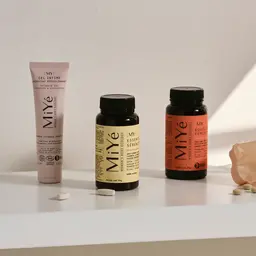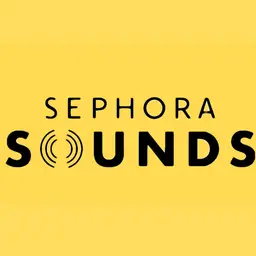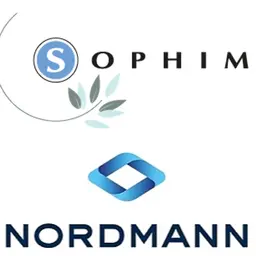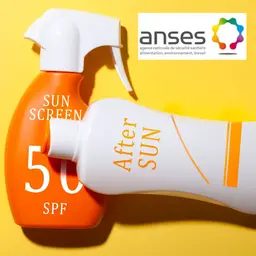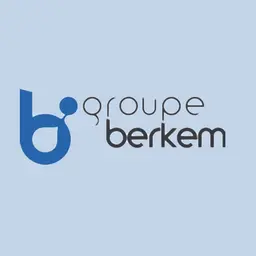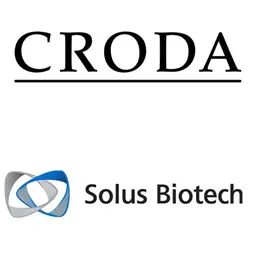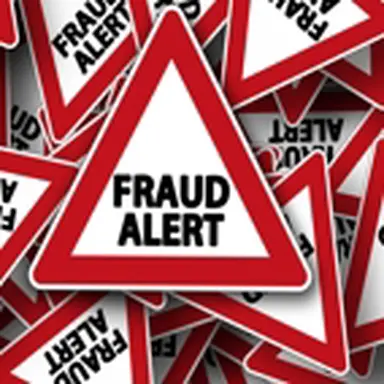
Like many others, the cosmetics industry is the victim of counterfeiting. In addition to being often badly crafted, these imitations expose consumers to certain hazards. As a matter of fact, recent news has shown cosmetics counterfeiting was actually rife, even in France. CosmeticOBS has made investigations.
Although the French customs press service announced a record seizure of counterfeited beauty products on Wednesday, January 5, 2017, it all happened in December.
After a four-month investigation, the customs services managed by Bruno Collin made a search at a laboratory in the South-West of Paris on Friday, December 2, 2016. There, they found almost 9,500 products that fraudulently bore the name of the Bioderma brand. The goods had been produced two days before. They had already been filmed and placed on pallets, ready to be delivered to a destination the customs services still do not know anything about.
But their investigations were not over just yet. Bruno Collin explains that the ‘driver who was to collect the goods said he was supposed to deliver them to another near warehouse.’ The search at the second place was conclusive. Bruno Collin and his team found other products, as well as a whole set of shelves filled with packaging, from boxes to caps and bottles. Soon, other information led investigators to go to Calvados, Normandy, where other goods were potentially stored. It was a success: all in all, almost 160,000 products were seized.
‘This is an unprecedented case in France. Until now, there had never been any production site for cosmetics counterfeiting on the national territory,’ Bruno Collin asserts, ‘especially since this laboratory also made products under its own brand name legally. Meanwhile, they fraudulently used another brand’s name,’ he added. Further investigations will be led by the national judicial customs service, as ordered by the public prosecutor’s office in Melun, near Paris.
The question is: were doubts on this laboratory pure chance? Absolutely not: the head of the investigations highlights the collaboration between the various customs services on this case, stating the ‘Drugs Observatory integrated to our intelligence services is in charge of everything that relates to counterfeiting and potentially hazardous products. They are the ones that drew the attention on the brand’s potential counterfeiting activity.’ Then, an inquiry was immediately launched, and the laboratory searched was discovered after several months of investigations.
In 2015, out of 7.7 million counterfeited items seized by the customs services, about 512,000 belonged to the cosmetics category. The threat on this industry is real, and it is up to several players to protect it (and protect themselves). That is all very well, but how?
What can brands do?
Ask for an intervention
Brands are the first to be affected by the counterfeiting issue. In addition to fraudulent use of their intellectual property, there is obviously a shortfall in earnings for them. And yet, brands and rights holders are the first to be able to protect themselves from any misuse of their property. Indeed, if a company holds a trademark, a formula, or products, an application for action may be filed to customs services. It is completely free to apply and it can be done online (see link). Of course, it is best to provide as much information as possible to help customs agents make a difference between original products and counterfeited items.
It is important to insist on the fact that this action should be taken by brands. If the application has not been filed, it is impossible for the customs services to seize any counterfeited product. Still, it is not necessary to suspect any fraudulent activity to submit the file to the customs. It is safer to do it systematically (the application is valid for a year). And as the saying goes, discretion is the better part of valour.
Lodge a complaint
In case of counterfeiting activity with respect to a brand, the logic action to take is to lodge a complaint to obtain damages. This option provides for immediate legal proceedings.
However, if a huge volume of goods is seized, the customs are compelled to inform the legal authorities, which will launch an investigation, even if the rights holder does not wish to lodge a complaint. Indeed, the judge may decide that the case involves a whole network and there is a risk of financial loss and tax losses, as well as potential health issues.
Check correlation tables
The French Federation of Beauty Companies (FEBEA), a professional cosmetics union, also helps its members fight against counterfeiting. Emmanuelle Gourbin, its Legal & Social Affairs Director, explains the FEBEA is ‘very active in the search for correlation tables.’ This practice specifically refers to perfume counterfeiting. ‘These tables are lists used by resellers to make one of their products correspond to a perfume sold by a well-known brand through correlations in terms of fragrances,’ Emmanuelle Gourbin explains. To manage and eradicate those mean tricks, the manhunt mainly takes place online, but also on the market and in small stores. As regards physical controls, the Federation works in collaboration with police or the DGCCRF (French General Directorate for Competition Policy, Consumer Affairs, and Fraud Control), who inform them of any potential counterfeited products. When a counterfeiting offence is detected, the FEBEA can notify the rights holders of it. Emmanuelle Gourbin specifies that ‘several brands are usually concerned at the same time. The idea is to take common action to have a stronger impact, get the same lawyer, and, as a result, centralize defence.’
Methods used by the customs services
Most of the time, the products derived from counterfeiting are made abroad. China and India are the main countries to export fake cosmetics. As a consequence, customs services focus specifically on import flows, with very precise methods.
Defining targets
Customs agents are used to and trained to recognize counterfeited products. Other than customs intuition, agents work by targeting parcels. Several indicators help extract the parcels containing counterfeited products, like their origin, certain types of packaging, or company names. Customs agents work in major processing centres like Roissy, at the main Paris airport, but they also carry out road checks in France.
Working in collaboration with the countries fraudulent goods are imported from
‘When production sites can be identified, we contact, not necessarily customs authorities, but tax authorities or police of the country at stake,’ the French customs press service explains. There are regular information exchanges.
Being part of a European framework makes it easier to launch the process, due to the free circulation of goods. It is even easier to launch judicial investigations.
Working in collaboration with brands
‘If the volume is larger than one parcel, the rights holders that have filed an application for action are informed of its counterfeiting nature against the original products,’ the customs press service affirms. Although all the information related to product seizure may not be revealed, since it is subject to the obligation of professional secrecy, the brand is asked to confirm the products seized by customs services are actually counterfeited goods. Then, there is an exchange of information (pictures, serial numbers) to find out whether they are authentic or not. Depending on the answers, the customs proceed to the actual seizure of the products or let them circulate.
Destroying products
Usually, at first, the products seized are kept by the customs. Then, they are destroyed, either following investigations, or when customs stocks are full. The products are crushed. If the brand concerned decides not to lodge a complaint, the products are destroyed more quickly.
A few tips for consumers
Despite all these measures, certain cosmetics still manage to get through this network and end up in consumers’ hands. These products often contain hazardous or even banned substances, and they represent a hazard for health, on top of being illegal.
Recognizing a counterfeited product
Usually, counterfeited products can be identified with the naked eye. If a consumer ends up buying a product whose origin raises doubts, the packaging is often of great help. Spelling or typography mistakes, colour changes compared to the original products… all this should get anyone thinking.
How to avoid any nasty surprise
As the customs press service repeats, ‘the best is to make purchases through recognized selling channels, and live,’ meaning in brands’ official stores. For example, street markets should be avoided.
Although e-commerce is on a roll, it is important not to use online shopping too much or avoid selling interfaces between individuals. For aficionados of this type of websites, you can avoid evil by choosing platforms recognized as having adopted a proactive policy intended to fight against counterfeiting. Lastly, the seller’s reputation is a good way to check whether you can shop safely or not.
Risks in case counterfeited products are purchased
• For individuals
If the customs seize the parcel, the consumer risks facing sanctions:
- Goods may be confiscated
- The means of transport for the goods may be confiscated
- A fine may be imposed – from once to twice the value of the authentic goods
- A sentence of a maximum of three years in jail may be decided
If the customs have not seized the parcel, there is no risk for consumers. The most logical procedure is to contact the selling platform to be reimbursed. On the whole, consumers have very limited options.
• For professionals
If counterfeited goods are purchased from a supplier, the best is to contact the customs to possibly launch investigations. Besides, professionals may directly lodge a complaint.
Whether it be on the level of brands or consumers, vigilance is the best way to fight against fraud in the cosmetics industry.
JS

